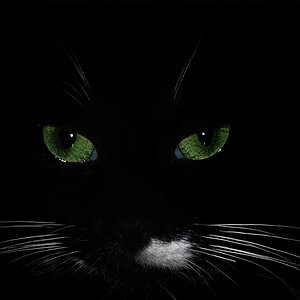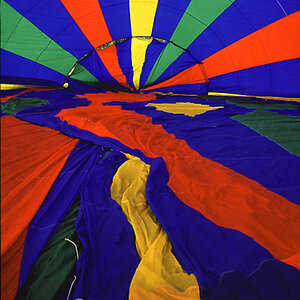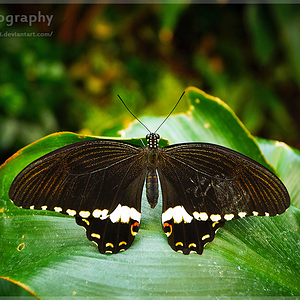TCampbell
Been spending a lot of time on here!
- Joined
- Mar 31, 2012
- Messages
- 3,614
- Reaction score
- 1,556
- Location
- Dearborn, MI
- Can others edit my Photos
- Photos OK to edit
This comes up "from time to time" so I thought I'd throw it out because tonight is that magical night.
When imaging a "full" moon rising over a landscape, cityscape, it's often better to take the image the night BEFORE the full moon and not the night "of" the full moon. By shooting the night before, the moon technically rises a little before sunset. As the sun sets and you're in the golden hour, the moon is low, seems larger (technically an illusion the moon does not change sizes near the horizon).
Tonight is the "day before" the full moon.
But the really important bit is that the sky will be dusky blue instead of black and that means you actually get better light on your foreground landscape/cityscape with some sky color beyond and a "full moon" (not technically because you're a day early) and the whole shot just looks a lot better.
If you do on the evening "of" the full moon then by the time the moon is high enough the sky is practically black and any foreground elements of interest have nearly no light on them -- and light from the moon itself would put those objects in silhouette.
If there's a specific landscape/cityscape you want to image and you want the moon to be located precisely in a specific spot (e.g. between two buildings... or over some specific mountain, etc.) while you can't move the moon or the landscape, you can stand in the right spot to get the moon to appear over the object of interest. To find that spot, there are a couple of apps or sites that can help.
You can use:
"Photographer's Ephemeris": The Photographer's Ephemeris
"Sun Surveyor": Sun Surveyor | Sun & Moon Position Visualization and Tracking App for iOS & Android
Both of these have apps that basically leverage Google maps, allow you to drop a pin on the spot where you want to stand and then draw the line showing the direction of the sun or moon, etc. at any time you want. You can move around to get the line pointing to the moon (for example) in the post you'd want it to be... then work backward to see where you'd need to be standing to get that shot.
Also... but less important... is this idea of a "super moon". A "super moon" is not an astronomy term. The astronomy term is "perigee moon". The "perigee" is the point during the lunar month where the moon is nearest to the Earth. The moon has an elliptical orbit. During the lunar month at one point it will be nearest to Earth (perigee) and another point it's farthest from Earth (apogee) -- regardless of whether or not it is "full".
The perigee moon occurs Sunday morning (Saturday night depending on where you live in the world.) But that puts tonight's moonrise within about 1 day of the perigee so the moon won't be substantially bigger tomorrow night than it is tonight. The perigee moon is only slightly closer and it makes the moon appear only about 10% bigger. The moon is fairly small (about 1/2º from edge to edge when measured as an angular dimension).
To make the moon look huge in relation to the foreground, you want to get very far away from your "foreground" and then use a VERY LONG LENS. The narrower angle of view on the long lens will make the moon occupy a larger area of the frame.
For example: If you use a 300mm lens on an APS-C camera body (I used 1.6x crop factor for the values I provide here. With a 1.5x crop-factor the moon would be just fractionally smaller (not really enough to notice), that will provide an "angular" field of view of about 4.3º horizontal by about 2.9º vertical dimension. The angular width of the moon TONIGHT is 33 arc-minutes (there are 60 arc-minutes in 1 degree) -- so just fractionally larger than a half degree (usually the moon is about 30 arc-minutes wide -- like I said... the moon won't seem much larger... just 10%). That makes the moon occupy about 1/8th of the frame horizontally and but just a tiny bit more than 1/5th by vertical dimension. If you then back up so far that buildings or mountains seem tiny (even with a 300mm lens attached) the size of the moon really won't change (you can't move on forward or backward enough to change the size of the moon and still be standing on Earth). This creates the illusion of a huge moon rising over the foreground.
Next month's full moon is August 10th so August 9 would be the better night to shoot it. That one, btw, will be a bit closer to the perigee at time of full moon and would technically be the largest full moon of the year.
As Neil DeGrasse Tyson points out... that's a "super moon" if you believe that when you got a 11" pizza but thought you were getting a 10" pizza that you got a "super pizza". ;-)
NOTE: You can look up the angular field of view dimensions using the calculator on this site: http://www.tawbaware.com/maxlyons/calc.htm
When imaging a "full" moon rising over a landscape, cityscape, it's often better to take the image the night BEFORE the full moon and not the night "of" the full moon. By shooting the night before, the moon technically rises a little before sunset. As the sun sets and you're in the golden hour, the moon is low, seems larger (technically an illusion the moon does not change sizes near the horizon).
Tonight is the "day before" the full moon.
But the really important bit is that the sky will be dusky blue instead of black and that means you actually get better light on your foreground landscape/cityscape with some sky color beyond and a "full moon" (not technically because you're a day early) and the whole shot just looks a lot better.
If you do on the evening "of" the full moon then by the time the moon is high enough the sky is practically black and any foreground elements of interest have nearly no light on them -- and light from the moon itself would put those objects in silhouette.
If there's a specific landscape/cityscape you want to image and you want the moon to be located precisely in a specific spot (e.g. between two buildings... or over some specific mountain, etc.) while you can't move the moon or the landscape, you can stand in the right spot to get the moon to appear over the object of interest. To find that spot, there are a couple of apps or sites that can help.
You can use:
"Photographer's Ephemeris": The Photographer's Ephemeris
"Sun Surveyor": Sun Surveyor | Sun & Moon Position Visualization and Tracking App for iOS & Android
Both of these have apps that basically leverage Google maps, allow you to drop a pin on the spot where you want to stand and then draw the line showing the direction of the sun or moon, etc. at any time you want. You can move around to get the line pointing to the moon (for example) in the post you'd want it to be... then work backward to see where you'd need to be standing to get that shot.
Also... but less important... is this idea of a "super moon". A "super moon" is not an astronomy term. The astronomy term is "perigee moon". The "perigee" is the point during the lunar month where the moon is nearest to the Earth. The moon has an elliptical orbit. During the lunar month at one point it will be nearest to Earth (perigee) and another point it's farthest from Earth (apogee) -- regardless of whether or not it is "full".
The perigee moon occurs Sunday morning (Saturday night depending on where you live in the world.) But that puts tonight's moonrise within about 1 day of the perigee so the moon won't be substantially bigger tomorrow night than it is tonight. The perigee moon is only slightly closer and it makes the moon appear only about 10% bigger. The moon is fairly small (about 1/2º from edge to edge when measured as an angular dimension).
To make the moon look huge in relation to the foreground, you want to get very far away from your "foreground" and then use a VERY LONG LENS. The narrower angle of view on the long lens will make the moon occupy a larger area of the frame.
For example: If you use a 300mm lens on an APS-C camera body (I used 1.6x crop factor for the values I provide here. With a 1.5x crop-factor the moon would be just fractionally smaller (not really enough to notice), that will provide an "angular" field of view of about 4.3º horizontal by about 2.9º vertical dimension. The angular width of the moon TONIGHT is 33 arc-minutes (there are 60 arc-minutes in 1 degree) -- so just fractionally larger than a half degree (usually the moon is about 30 arc-minutes wide -- like I said... the moon won't seem much larger... just 10%). That makes the moon occupy about 1/8th of the frame horizontally and but just a tiny bit more than 1/5th by vertical dimension. If you then back up so far that buildings or mountains seem tiny (even with a 300mm lens attached) the size of the moon really won't change (you can't move on forward or backward enough to change the size of the moon and still be standing on Earth). This creates the illusion of a huge moon rising over the foreground.
Next month's full moon is August 10th so August 9 would be the better night to shoot it. That one, btw, will be a bit closer to the perigee at time of full moon and would technically be the largest full moon of the year.
As Neil DeGrasse Tyson points out... that's a "super moon" if you believe that when you got a 11" pizza but thought you were getting a 10" pizza that you got a "super pizza". ;-)
NOTE: You can look up the angular field of view dimensions using the calculator on this site: http://www.tawbaware.com/maxlyons/calc.htm
Last edited:


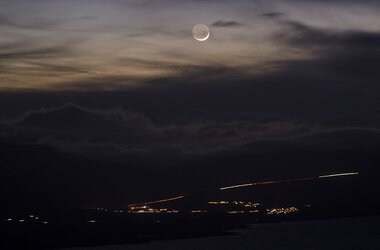
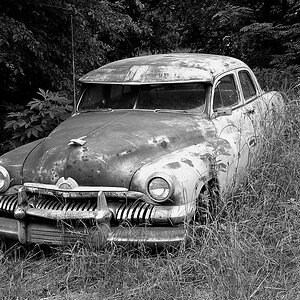
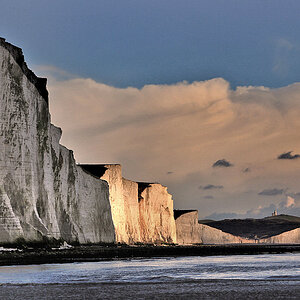

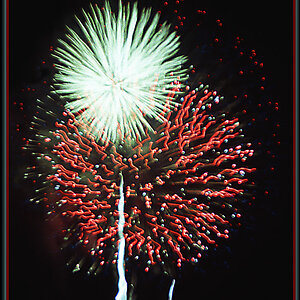
![[No title]](/data/xfmg/thumbnail/39/39292-4169a355b794ae9735845c4ad45d06ff.jpg?1619738958)
